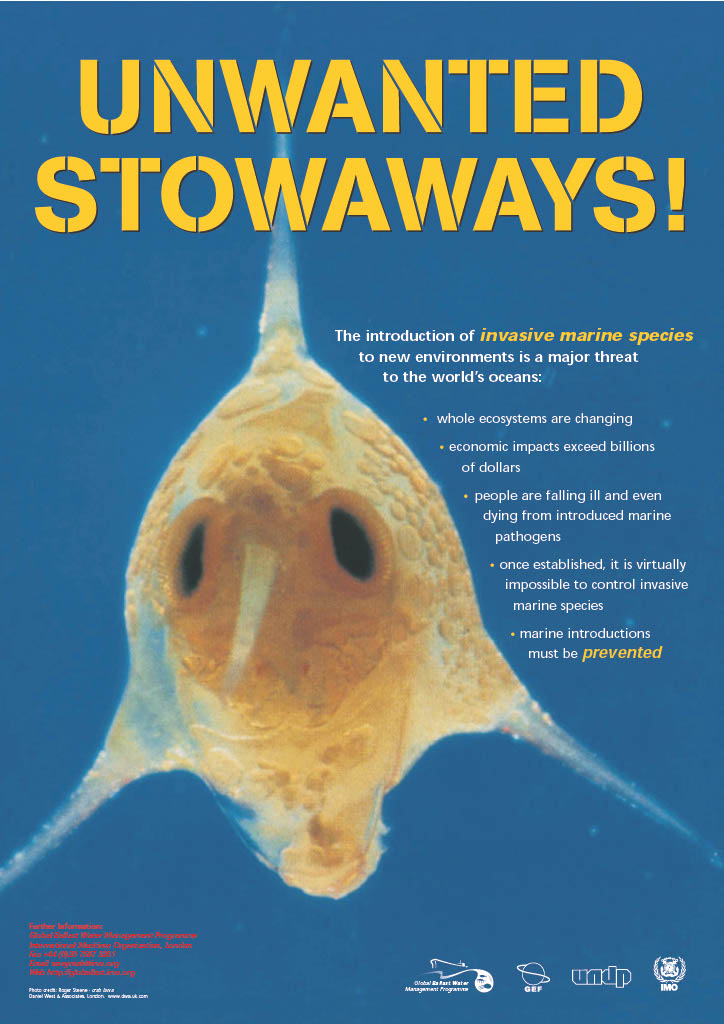
Since the introduction of steel-hulled
ships
, water has been used as ballast to stabilize
ships
at sea. Ballast water is pumped in to maintain safe operating conditions throughout a voyage.?This practice reduces stress on the hull, provides transverse stability, improves propulsion and manoeuvrability, and compensates for weight changes in various cargo load levels and due to fuel and water consumption.
While ballast water is essential for safe and efficient modern shipping operations, it may pose serious ecological, economic and health problems due to the multitude of marine species carried in ships’ ballast water. These include bacteria, microbes, small invertebrates, eggs, cysts and larvae of various species. The transferred species may survive to establish a reproductive population in the host environment, becoming invasive, out-competing native species and multiplying into pest proportions.
Scientists first recognized the signs of an alien species introduction after a mass occurrence of the Asian phytoplankton algae Odontella (Biddulphia sinensis) in the North Sea in 1903. But it was not until the 1970s that the scientific community began reviewing the problem in detail. In the late 1980s, Canada and Australia were among countries experiencing particular problems with invasive species, and they brought their concerns to the attention of IMO's Marine Environment Protection Committee (MEPC).
The problem of invasive species in ships’ ballast water is largely due to the expanded trade and traffic volume over the last few decades and, since the volumes of seaborne trade continue to increase, the problem may not yet have reached its peak yet. The effects in many areas of the world have been devastating. Quantitative data show that the rate of bio-invasions is continuing to increase at an alarming rate and new areas are being invaded all the time.
The spread of invasive species is now recognized as one of the greatest threats to the ecological and the economic well being of the planet, and one of the main drivers of biodiversity loss. These species are causing enormous damage to biodiversity and the valuable natural riches of the earth upon which we depend. Direct and indirect health effects are becoming increasingly serious and the damage to the environment is often irreversible.
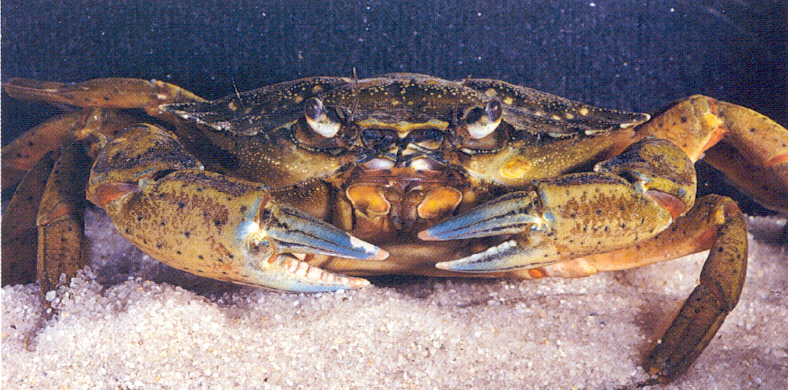
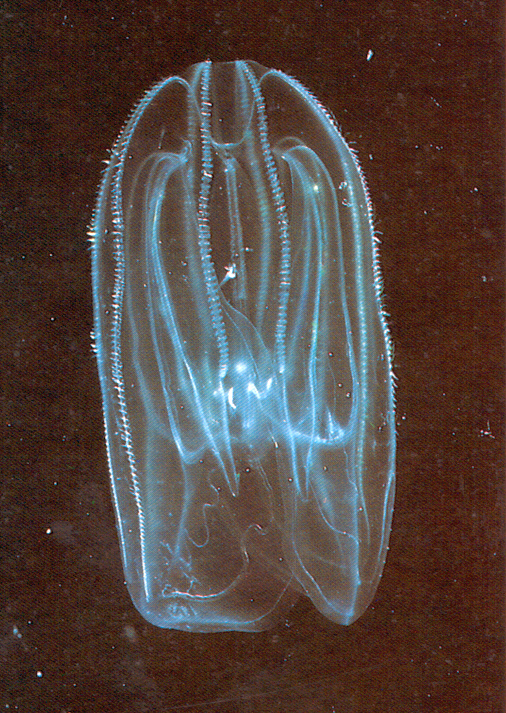
For some examples of aquatic bio-invasions causing major impact please
click here
. It should be noted, however, that there are hundreds of other serious invasions which have been or are in the process of being recorded around the world.
Global response
Preventing the transfer of invasive species and coordinating a timely and effective response to invasions requires cooperation and collaboration among governments, economic sectors, non-governmental organizations and international treaty organizations; the UN Convention on the Law of the Sea (Article 196) provides the global framework by requiring States to work together to prevent, reduce and control pollution of the marine environment including the intentional or accidental introduction of species, alien or new, to a particular part of the marine environment, which may cause significant and harmful changes thereto.
IMO has been at the forefront of the international effort by taking the lead in addressing the transfer of invasive aquatic species (IAS) through shipping. In 1991 the MEPC adopted the?
International Guidelines for preventing the introduction of unwanted aquatic organisms and pathogens from ships' ballast water and sediment discharges
(resolution MEPC.50(31)); while the United Nations Conference on Environment and Development (UNCED), held in Rio de Janeiro in 1992, recognized the issue as a major international concern.
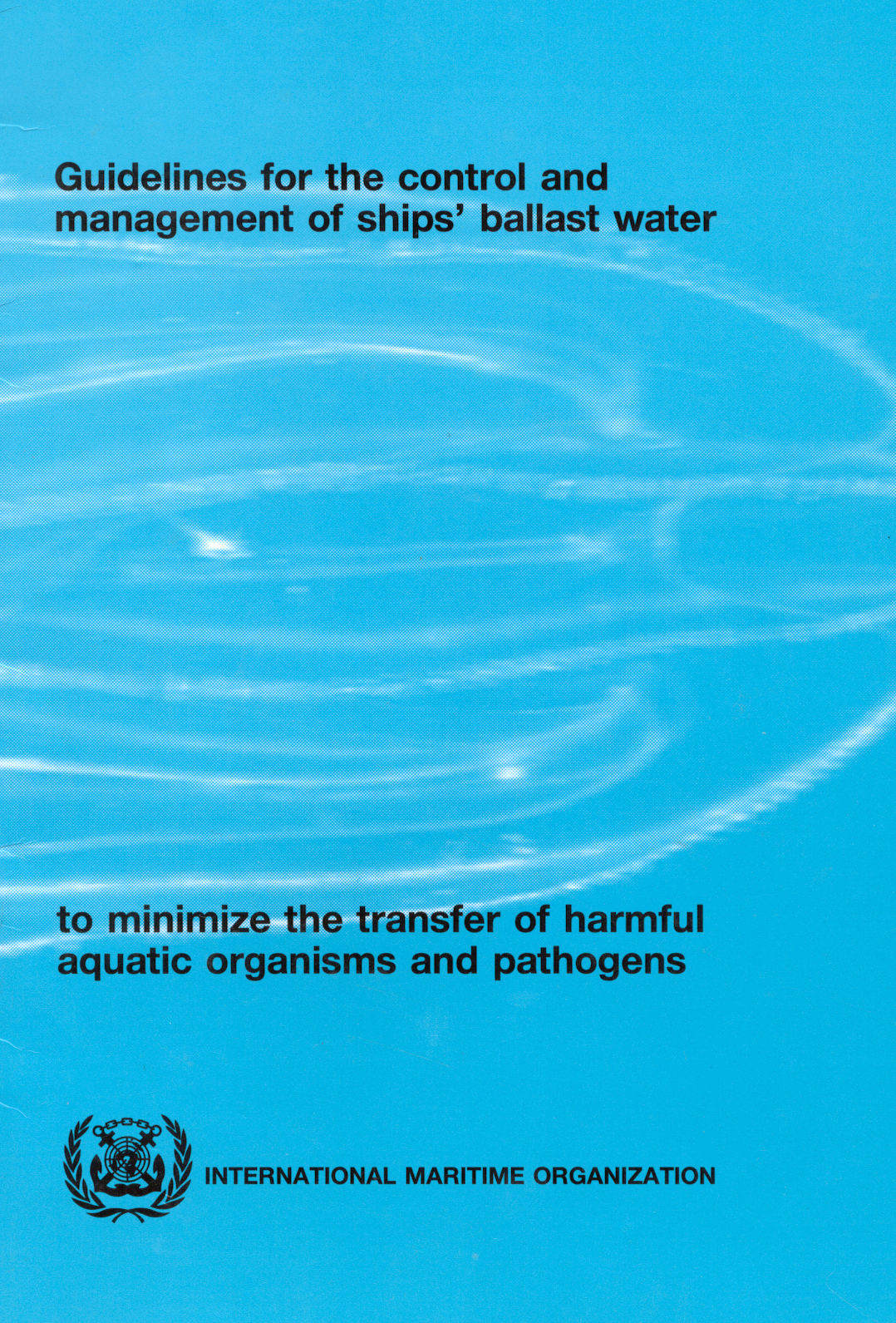
In November 1993, the IMO Assembly adopted resolution A.774(18) based on the?1991 Guidelines, requesting the MEPC and the Maritime Safety Committee (MSC) to keep the Guidelines under review with a view to developing internationally applicable, legally-binding provisions. While continuing its work towards the development of an international treaty, the Organization adopted, in November 1997, resolution A.868(20) -?
Guidelines for the control and management of ships' ballast water to minimize the transfer of harmful aquatic organisms and pathogens
, inviting its Member States to use these new guidelines when addressing the issue of IAS.
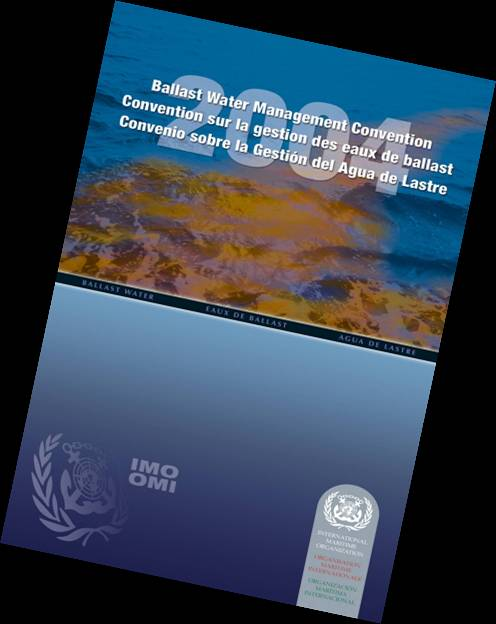
After more than 14 years of complex negotiations between IMO Member States, the
International Convention for the Control and Management of Ships' Ballast Water and Sediments
(BWM Convention) was adopted by consensus at a Diplomatic Conference held at IMO Headquarters in London on 13 February 2004. In his
opening address
to the Conference the Secretary-General of IMO stated that the new Convention would represent a significant step towards protecting the marine environment for this and future generations. “Our duty to our children and their children cannot be over-stated. I am sure we would all wish them to inherit a world with clean, productive, safe and secure seas ? and the outcome of this Conference, by staving off an increasingly serious threat, will be essential to ensuring this is so”.
The Convention requires all ships to implement a Ballast Water Management Plan. All ships have to carry a Ballast Water Record Book and are required to carry out ballast water management procedures to a given standard. Parties to the Convention are given the option to take additional measures which are subject to criteria set out in the Convention and to IMO guidelines.
Several articles and regulations of the BWM Convention refer to guidelines to be developed by the Organization, and Conference resolution 1 invited IMO to develop these guidelines as a matter of urgency and adopt them as soon as practicable and, in any case, before the entry into force of the Convention, with a view to facilitating global and uniform implementation of the instrument.
The MEPC, at its fifty-first session in April 2004, approved a programme for the development of guidelines and procedures for uniform implementation of the BWM Convention, listed in Conference resolution 1, including additional guidance required but not listed in the resolution. The programme was further expanded at the fifty-third session of the MEPC in July 2005 to develop and adopt 14 sets of Guidelines, the last one being adopted by resolution MEPC.173(58) in October 2008.
The Guidelines, some of which have been revised since their initial adoption, and a number of other relevant guidance documents can be accessed
here
.
Approval of ballast water management systems
During the Convention development process, considerable efforts were made to formulate appropriate standards for ballast water management. They are the ballast water exchange standard and the ballast water performance standard. Ships performing ballast water exchange, which is a transitional option, shall do so with an efficiency of 95 per cent volumetric exchange of ballast water, while ultimately ships shall meet a performance standard based on agreed numbers of organisms per unit of volume of discharged ballast water.
Regulation D-3 of the BWM Convention requires that ballast water management systems used to comply with the Convention must be approved by the Administration taking into account the
Guidelines for approval of ballast water management systems
(G8). The Guidelines (G8) have been revised in 2016 and converted into a mandatory
Code for Approval of Ballast Water Management Systems
(BWMS Code), which was adopted by MEPC 72 (April 2018) and entered into force in October 2019.
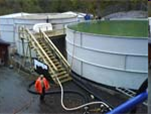
Regulation D-3 also requires that ballast water management systems which make use of Active Substances to comply with the Convention shall be approved by IMO in accordance with the
Procedure for approval of ballast water management systems that make use of Active Substances
(G9). Procedure (G9) consists of a two-tier process ? Basic and Final Approval ? to ensure that the ballast water management system does not pose unreasonable risk to the environment, human health, property or resources.
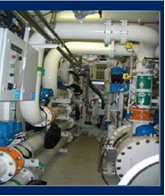
A technical group of experts has been established under the auspices of GESAMP to review the proposals submitted for approval of ballast water management systems that make use of Active Substances. The GESAMP Ballast Water Working Group (GESAMP-BWWG) reports to the Organization on whether such a proposal presents unreasonable risks in accordance with the criteria specified in the Procedure (G9). For more detailed information regarding the ballast water treatment technologies please click
here
.
The Convention requires a review to be undertaken in order to determine whether appropriate technologies are available to achieve the ballast water performance standard. MEPC has conducted a number of such reviews and agreed that appropriate technologies are available to achieve the standard contained in regulation D-2 of the BWM Convention.
BWM Convention status

The BWM Convention
entered into force
on 8 September 2017.
The adoption of all the required Guidelines for the uniform implementation of the BWM Convention and the approval and certification of modern ballast water treatment technologies have removed the major barriers to the ratification of the instrument, and the Parties to the Convention now represent the vast majority of the world’s fleet.